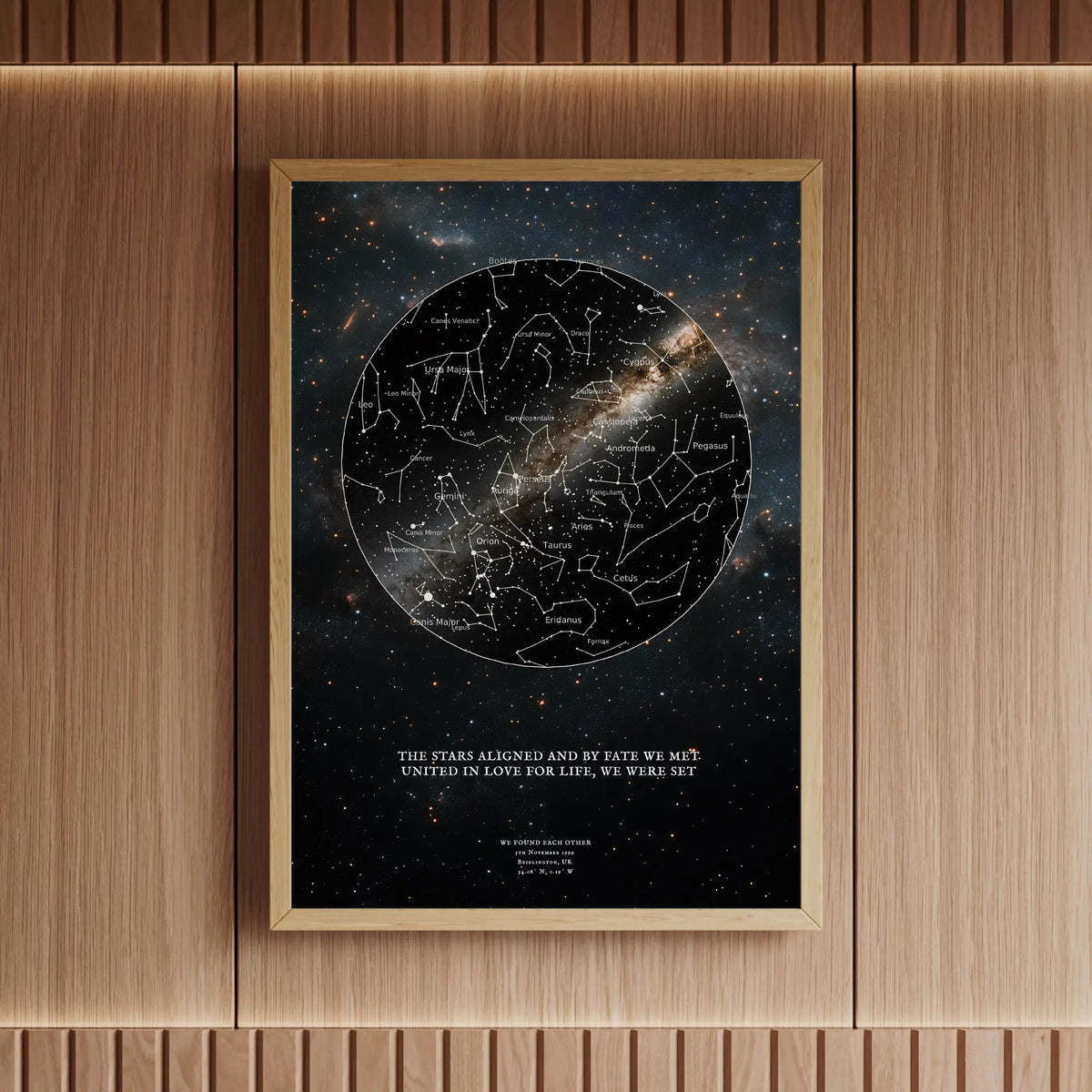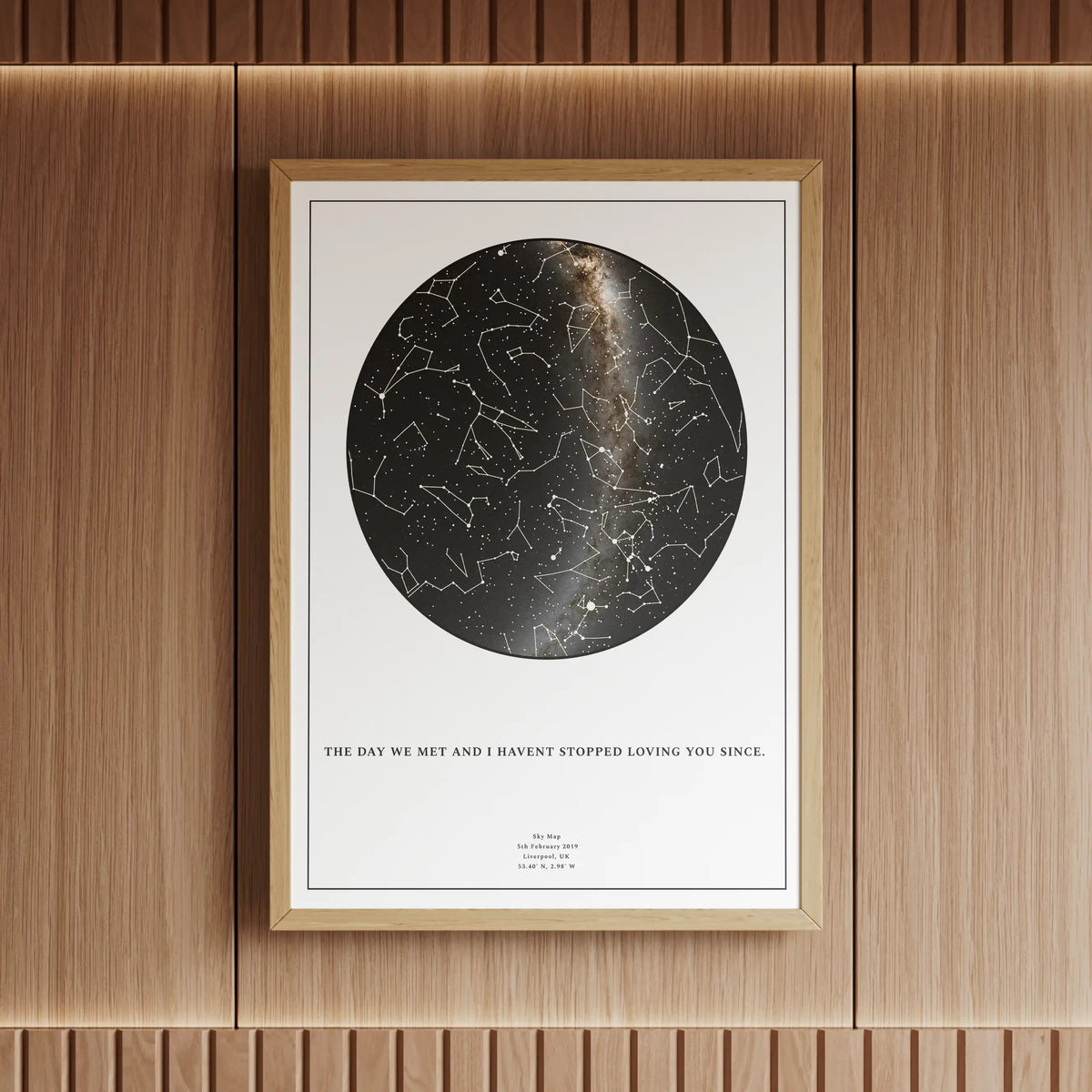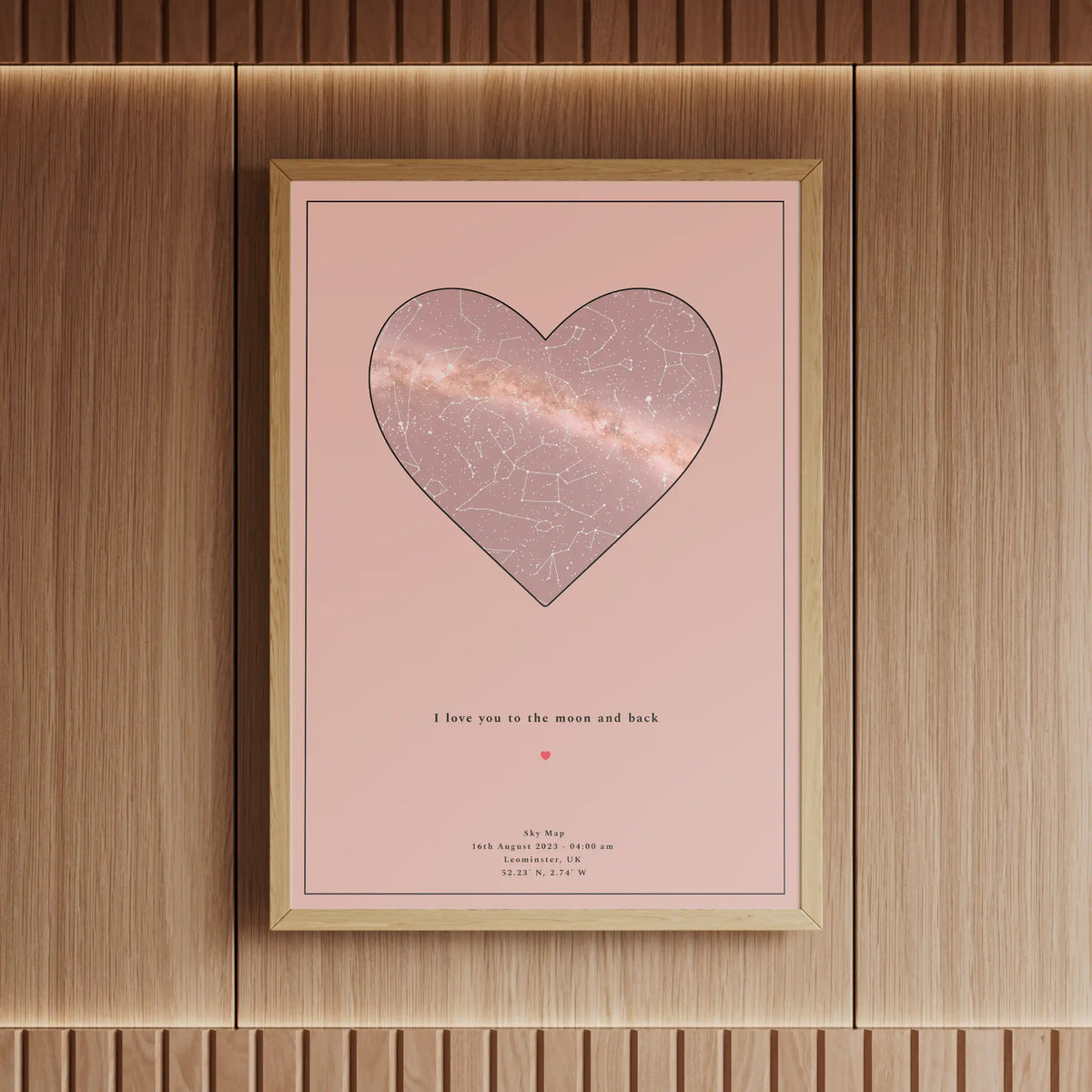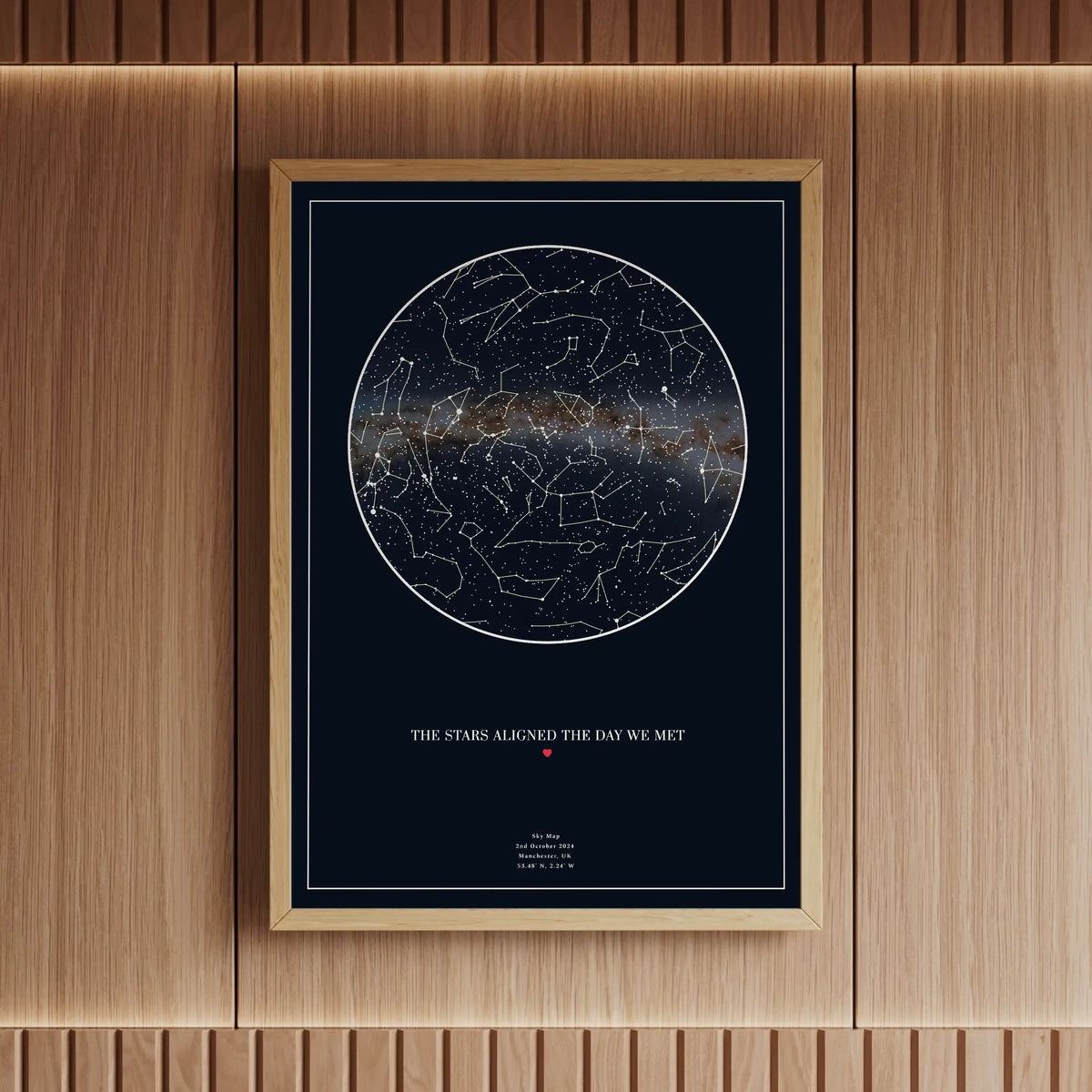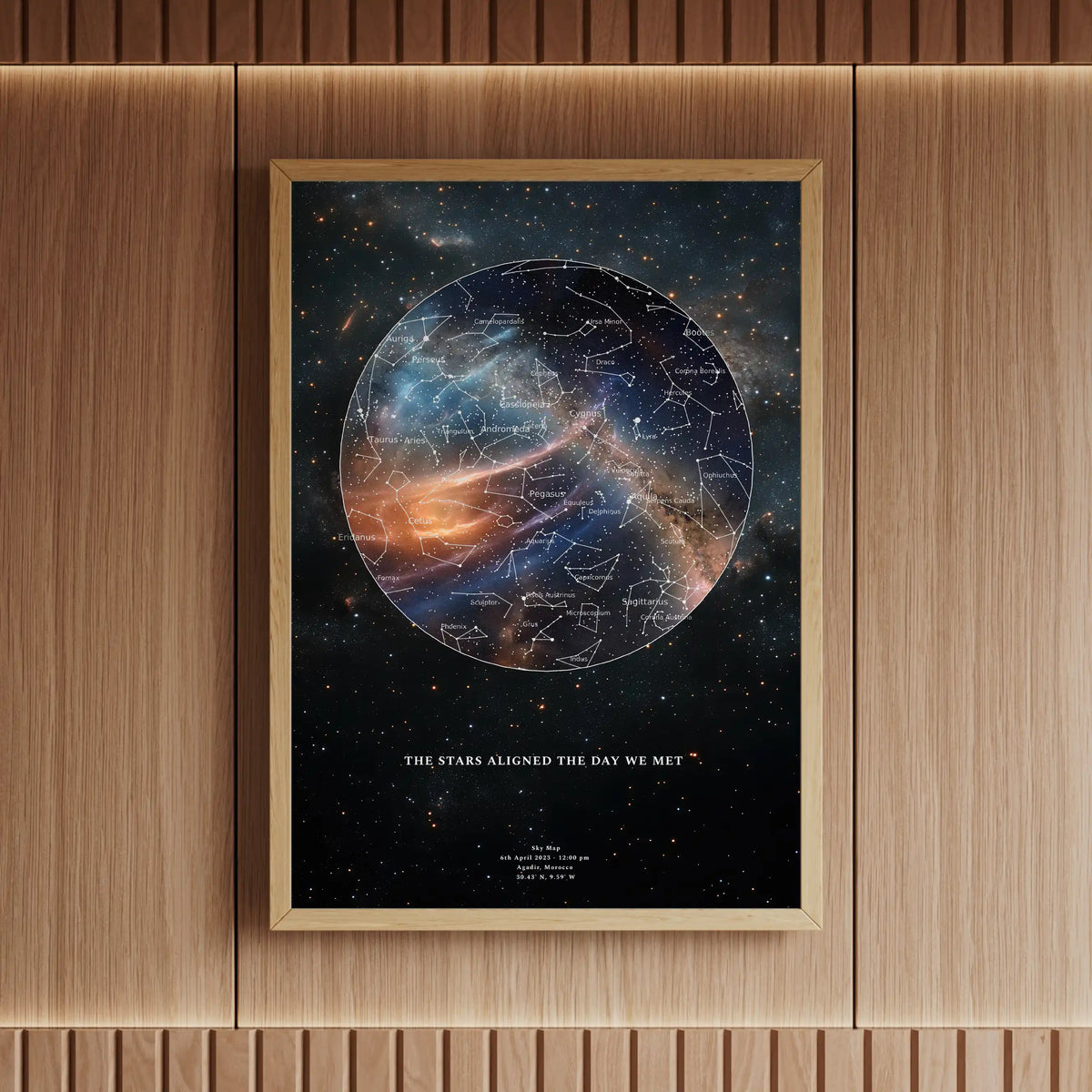Discover the magnificent star patterns gracing our British skies and learn how to capture these celestial moments forever
As summer evenings stretch long and the stars begin to glimmer in the warm twilight, we're reminded of the profound connections we share with the cosmos above. There's no better time to explore the ancient stories written in the constellations that have guided humanity for millennia, right here from our own British Isles.
Picture this: you're standing in your garden on a clear evening, gazing upward as the first stars begin to appear. What you're witnessing isn't just random points of light scattered across the darkness—it's a carefully choreographed cosmic dance that has been unfolding for thousands of years. The constellations visible from the UK sky tell stories of heroes and monsters, guide travellers across vast distances, and connect us to our ancestors who looked up at these very same star patterns.
From the iconic plough of Ursa Major to the brilliant hunter Orion striding across our winter skies, the British night sky constellations offer a year-round spectacle that changes with the seasons. Whether you're a complete beginner wondering how to identify your first constellation or an experienced stargazer looking to deepen your knowledge, understanding what's visible from our unique latitude opens up a universe of possibilities.
Your Complete Seasonal Guide to UK Constellations
The beauty of stargazing in the UK lies in its ever-changing nature. Each season brings a fresh celestial spectacular, with different constellations taking centre stage as others retreat beyond the horizon. This natural rotation ensures that British stargazers never run out of new sights to discover.
As winter's grip loosens and daylight hours extend, spring constellations in the UK emerge with stories of renewal and awakening. This season offers some of the most rewarding stargazing experiences, as the brilliant winter constellations begin their western descent while new patterns rise in the east.
Prominent Spring Constellations:
Leo the Lion
Dominated by the bright star Regulus, Leo is one of the few constellations that actually resembles its namesake. The distinctive "sickle" shape forms the lion's mane, making it easily recognizable high in the southern sky during spring evenings.
Virgo the Maiden
Home to Spica, one of the brightest stars in our sky, Virgo spreads across a vast area of the spring heavens. This large constellation represents the harvest maiden, perfectly timed as nature awakens from winter's slumber.
Boötes the Herdsman
Featuring the brilliant orange star Arcturus, Boötes appears as a distinctive kite shape in the northeastern sky. Arcturus is often the first bright star to catch attention as it rises above the spring horizon.
Summer brings shorter nights but compensates with spectacular summer constellations visible from the UK. The Milky Way reaches its most prominent position during summer months, creating a backbone across the sky filled with rich star fields and nebulae.
Summer's Stellar Highlights:
Cygnus the Swan
Flying along the Milky Way, Cygnus is marked by the prominent Northern Cross asterism. Its brightest star, Deneb, forms one corner of the famous Summer Triangle that dominates summer skies.
Lyra the Harp
Small but mighty, Lyra is anchored by Vega, one of the brightest stars in northern skies. This compact constellation sits high overhead during summer evenings, making it perfect for urban observers.
Aquila the Eagle
Completing the Summer Triangle with its bright star Altair, Aquila soars through the Milky Way. The eagle's wings span across rich star fields, offering excellent binocular viewing opportunities.
Autumn marks a transition period when UK autumn constellations bridge the gap between summer's Milky Way showcase and winter's brilliant stellar parade. This season offers some of the most photogenic star patterns, perfect for budding astrophotographers.
Autumn's Celestial Treasures:
Pegasus the Winged Horse
The Great Square of Pegasus forms one of autumn's most recognizable patterns. This large asterism serves as a launching point for finding many fainter autumn constellations scattered around it.
Andromeda the Princess
Home to the famous Andromeda Galaxy (M31), this constellation tells the story of Perseus's rescue. The galaxy itself is visible to the naked eye from dark UK locations as a faint smudge.
Cassiopeia the Queen
The distinctive "W" shape of Cassiopeia makes it one of the most easily recognized patterns in the northern sky. As a circumpolar constellation, it's visible year-round but reaches its highest point during autumn.
Winter brings the crown jewel of UK winter constellations—a spectacular array of bright stars and iconic patterns that make the cold nights worthwhile. These months offer the most rewarding stargazing experiences, with longer darkness and crystal-clear skies.
Winter's Magnificent Display:
Orion the Hunter
The king of winter constellations, Orion dominates the southern sky with his distinctive belt and bright stars. This celestial hunter provides the anchor point for locating numerous other winter constellations.
Gemini the Twins
Marked by the bright stars Castor and Pollux, Gemini tells the story of the twin brothers. This constellation sits high in winter skies, making it easily visible even from light-polluted areas.
Taurus the Bull
Featuring the bright red star Aldebaran and the beautiful Pleiades star cluster, Taurus charges across winter skies. The V-shaped Hyades cluster forms the bull's face, creating one of nature's most recognizable patterns.
Northern Circumpolar Constellations: Your Year-Round Companions
The magic of circumpolar constellations from the UK lies in their constant presence. These stellar patterns never disappear below our horizon, offering reliable navigation points and consistent observing targets throughout every season. For British stargazers, these constellations serve as faithful companions in our cosmic journey.
From the ancient legends of the Great Bear to the celestial queen's eternal vigil, circumpolar constellations have guided British explorers across trackless seas and inspired countless generations to look up in wonder.
Understanding Circumpolar Motion
The phenomenon of circumpolar motion occurs because these constellations sit close enough to the celestial north pole that they never dip below Britain's horizon. As Earth rotates, these star patterns appear to wheel around Polaris (the North Star) in a stately 24-hour dance that has provided natural timekeeping for millennia.
Ursa Major (The Great Bear)
The largest circumpolar constellation visible from the UK, containing the famous Plough asterism. Its pointer stars lead directly to Polaris, making it the ultimate navigation constellation for British observers.
Ursa Minor (The Little Bear)
Home to Polaris, the current North Star, this small constellation forms the Little Dipper. While fainter than its larger cousin, Ursa Minor plays a crucial role in navigation and orientation.
Draco (The Dragon)
This enormous serpentine constellation winds between the two bears, telling ancient stories of dragons and cosmic guardians. Draco contains several interesting double stars perfect for telescope observation.
Cassiopeia (The Queen)
The distinctive "W" shape makes Cassiopeia one of the most recognizable patterns in the northern sky. This constellation lies along the Milky Way, offering rich star fields for exploration.
Cepheus (The King)
Often overlooked due to its fainter stars, Cepheus forms a house-like shape near Cassiopeia. This constellation contains several variable stars that change brightness over predictable cycles.
Practical Benefits of Circumpolar Knowledge
Understanding these ever-present patterns transforms your stargazing experience. Whether you're planning a spontaneous evening observation or a dedicated astrophotography session, the circumpolar constellations provide:
- Instant Orientation: Always know which direction is north by locating the Plough and following its pointers to Polaris
- Time Estimation: The position of circumpolar constellations can help estimate time of night
- Navigation Aids: Use these patterns to locate seasonal constellations that rise and set
- Weather Windows: These constellations help you make the most of brief clear spells between clouds
Your Monthly Guide to UK Night Skies
Understanding the monthly progression of constellations throughout the year in the UK helps you plan optimal viewing sessions and ensures you never miss spectacular celestial events. Each month brings subtle shifts in star patterns, with some constellations reaching perfect visibility while others bid farewell until next year.
Winter Months: December through February
Winter delivers the most rewarding stargazing opportunities for British observers. December night sky UK showcases Orion beginning his magnificent reign over southern skies. By evening's end, the Hunter stands tall above the horizon, accompanied by his faithful companions—Canis Major with brilliant Sirius and Canis Minor featuring bright Procyon.
January intensifies the winter spectacle as Orion reaches his highest point during comfortable evening hours. Taurus constellation sits beautifully positioned for telescope exploration, while Gemini climbs toward its February peak. The entire winter sky sparkles with first-magnitude stars, creating an unforgettable display against crisp winter air.
Spring Transition: March through May
Spring brings dramatic changes as winter constellations begin their western descent while new patterns emerge from the east. March constellation viewing offers the best of both worlds—winter's brilliant stars still dominate early evening skies while spring patterns like Leo and Boötes climb toward prominence.
By May, the transformation is complete. Spring constellations UK observations reveal Leo high in the south, Virgo spreading across vast areas of sky, and the brilliant star Arcturus in Boötes catching attention in the northeast. This seasonal transition provides excellent opportunities for comparing different stellar environments and star colours.
Summer Challenges and Rewards: June through August
Summer trading longer daylight hours for spectacular late-night sky shows. Summer Triangle constellations—Lyra, Cygnus, and Aquila—dominate overhead during midnight hours, offering some of the finest stargazing opportunities of the year. The Milky Way reaches its most prominent position, stretching from northern Cassiopeia through Cygnus down to southern Sagittarius.
Patient summer observers are rewarded with views of constellations rarely seen from Britain. Scorpius constellation UK sightings require clear southern horizons and timing, but the distinctive curved tail and bright red star Antares make the effort worthwhile for dedicated stargazers.
Autumn Preparations: September through November
Autumn serves as a bridge between summer's Milky Way spectacular and winter's bright star parade. September stargazing UK offers comfortable temperatures combined with reasonable darkness hours, making it ideal for extended observation sessions.
The Great Square of Pegasus dominates autumn skies, serving as a launching point for finding numerous fainter constellations. Andromeda constellation provides one of autumn's greatest prizes—the Andromeda Galaxy (M31), visible to the naked eye from dark locations as our nearest major galactic neighbor.
Conquering Light Pollution: Urban Stargazing in the UK
Light pollution presents the greatest challenge facing modern British stargazers, yet understanding its effects and implementing smart strategies can restore much of the sky's wonder. From London's bright glow to the pristine darkness of remote Scottish highlands, UK light pollution varies dramatically, offering different opportunities for constellation observation.
Even from the heart of London, determined observers can identify two dozen major constellations and enjoy spectacular views of bright planets, the Moon, and double stars. The key lies in knowing what to look for and when to look.
Understanding UK Light Pollution Zones
The Campaign to Protect Rural England's light pollution maps reveal stark contrasts across Britain. Dark sky areas in the UK like Northumberland National Park, Snowdonia, and the Scottish Highlands offer near-pristine viewing conditions where the Milky Way appears as a magnificent river of light stretching across the heavens.
Urban areas present different challenges but unexpected opportunities. City stargazing UK focuses on the brightest stars and most distinctive patterns. Constellation outlines remain clearly visible even from central London, while planets often appear more stable due to reduced atmospheric turbulence over warm city surfaces.
Strategies for Urban Constellation Hunting
Successfully observing constellations from cities requires adapting traditional techniques to light-polluted conditions. Focus on first and second magnitude stars to trace constellation outlines, using them as anchors for the complete patterns. Orion, Ursa Major, Cassiopeia, and other bright patterns remain easily recognizable even from heavily light-polluted locations.
Timing becomes crucial under urban skies. Early evening hours, before ground-level lighting reaches peak intensity, often provide surprisingly good constellation visibility. The period just after astronomical twilight ends offers a brief window when sky contrast maximizes before late-night light pollution intensifies.
Escaping to Dark Sky Sanctuaries
Britain hosts several designated International Dark Sky Areas that preserve pristine night environments. Northumberland International Dark Sky Park spans 572 square miles of protected darkness, while Snowdonia and the Brecon Beacons offer similarly spectacular viewing opportunities within reach of major population centers.
These sanctuaries reveal constellation details invisible from urban areas—faint stars that complete mythological figures, subtle color variations between stellar types, and the intricate structure of the Milky Way itself. A single night under truly dark skies can transform your understanding of familiar constellations, revealing details that enhance every future observation.
Technology Solutions for Light-Polluted Skies
Modern technology offers powerful tools for urban constellation enthusiasts. Light pollution filters can enhance contrast for both visual observation and astrophotography, while smartphone apps help identify patterns obscured by bright skies. Computer-controlled telescopes can locate and track celestial objects automatically, maximizing viewing time under challenging conditions.
However, remember that technology should supplement, not replace, fundamental stargazing skills. Learning to identify major constellations with the naked eye from your local area creates a foundation that serves you anywhere on Earth, regardless of equipment availability or power sources.
British Folklore and Constellation Mythology
The cultural significance of constellations in Britain extends far beyond simple star pattern recognition. Our ancestors wove these celestial patterns into the fabric of daily life, creating stories that connected earthbound communities to cosmic cycles and eternal rhythms that governed everything from navigation to agriculture.
Ancient British Star Lore
Long before Roman and Greek mythologies dominated European astronomy, Celtic and Anglo-Saxon star stories explained the nightly parade of constellations across British skies. The Plough wasn't always a farming implement—to Celtic eyes, it represented the chariot of Arthur, the legendary king whose stories echo through Arthurian romance.
These indigenous interpretations often reflected the practical concerns of island peoples. Coastal communities developed detailed knowledge of how constellation positions related to tidal patterns and seasonal weather changes. Farmers used star positions to time planting and harvesting, creating agricultural calendars based on stellar observations.
Navigation Heritage
Britain's maritime heritage created a deep connection between constellations and navigation. The reliability of circumpolar patterns made them invaluable for coastal navigation around our complex coastline. Sailors developed detailed knowledge of how constellation positions indicated both direction and time, skills that proved crucial during the age of exploration.
The Pole Star navigation techniques developed by British mariners influenced naval practice worldwide. Understanding how to locate Polaris using the Plough's pointer stars became fundamental knowledge for anyone venturing beyond sight of land, whether crossing the North Sea or sailing to distant continents.
Modern Cultural Connections
Contemporary British culture maintains strong connections to constellation mythology through literature, art, and popular culture. From Shakespeare's references to stellar patterns in his plays to modern science fiction that imagines voyages to constellation stars, these ancient patterns continue inspiring creative expression.
Astronomical heritage sites across Britain preserve these cultural connections. Stonehenge's alignment with celestial events demonstrates sophisticated astronomical knowledge among ancient British peoples, while medieval cathedrals often incorporate stellar symbolism into their architectural details.
Educational and Scientific Legacy
Britain's contributions to modern astronomy built upon centuries of careful constellation observation. From Edmond Halley's comet predictions to William Herschel's discovery of Uranus, British astronomers used constellation knowledge as the foundation for revolutionary discoveries about the universe's true nature.
This legacy continues today through institutions like the Royal Astronomical Society and the numerous astronomical societies across Britain. Amateur astronomy clubs maintain active programs introducing new generations to constellation lore, ensuring these ancient connections between humanity and cosmos endure into the future.
Preserving Your Constellation Memories Forever
Some of life's most profound moments happen under starry skies—first dates beneath Orion's watchful gaze, family camping trips where children discover the Plough for the first time, or quiet evenings when the vastness of the universe puts everything into perspective. These astronomical moments deserve to be preserved in ways that capture not just the visual beauty, but the emotional connection to that exact celestial arrangement.
✨ Written In The Stars. Told By You.
At Skylit Studio, we believe that every constellation observation tells a unique story. Whether you've just witnessed your first meteor shower, proposed under the Summer Triangle, or shared the wonder of Saturn through a telescope with someone special, these moments become part of your personal cosmic narrative.
Our personalised star maps capture the exact astronomical arrangement visible from any UK location on your chosen date and time. Using advanced astronomical software and official star catalogues, we recreate the precise constellation positions, planet locations, and celestial coordinates that made your moment truly unique.
Creating Lasting Astronomical Art
Traditional photographs fade, digital files become corrupted, and memories grow dim with time. But a personalised star map transforms your constellation experience into a permanent piece of art that becomes more meaningful as years pass. Every time you see those familiar star patterns in the night sky, you'll remember not just what you saw, but how you felt in that precious moment.
From the distinctive outline of Orion on the night you first fell in love, to the circumpolar patterns that witnessed your child's first words, custom constellation maps preserve the cosmic backdrop to your most treasured memories. These aren't generic star charts—they're precision recreations of the exact sky visible from your specific location at your chosen moment in time.
Perfect for Every Constellation Enthusiast
Whether you're commemorating a special anniversary, celebrating a milestone birthday, or simply wanting to preserve the magic of a perfect stargazing session, our bespoke star maps serve as meaningful gifts that transcend ordinary presents. Each print showcases the astronomical accuracy that serious stargazers appreciate while maintaining the visual beauty that makes them perfect home décor.
Choose from our range of elegant background designs exclusively available through Skylit Studio, each carefully crafted to complement the natural beauty of constellation patterns. From minimalist designs that highlight stellar arrangements to more elaborate options incorporating British astronomical heritage, every map reflects the unique character of your personal celestial story.
Technical Excellence Meets Emotional Connection
Our commitment to astronomical precision ensures every star appears exactly where it belonged on your special date. Using the same databases trusted by professional observatories worldwide, we calculate precise stellar positions, accounting for precession, proper motion, and atmospheric effects visible from your UK location.
But technical accuracy alone doesn't create meaningful art. Our design team carefully balances scientific precision with visual appeal, ensuring your personalised constellation print works equally well as a conversation starter, a romantic gesture, or a family heirloom that tells your unique story through the language of stars.
Frequently Asked Questions About UK Constellations
What are the best constellations to see from the UK?
The UK offers excellent views of numerous constellations year-round. The most prominent include Ursa Major (containing the Plough), Orion during winter months, Cassiopeia's distinctive "W" shape, and the Summer Triangle formed by Lyra, Cygnus, and Aquila. These patterns remain easily visible even from light-polluted urban areas and serve as excellent starting points for locating fainter constellations.
When is the best time to see winter constellations in the UK?
Winter constellations like Orion, Taurus, and Gemini are best viewed from December through February, reaching optimal positions during evening hours. Orion begins appearing in the eastern sky around 9 PM in early December, reaching its highest southern position by midnight in January. For comfortable viewing without staying up too late, plan observation sessions between 8-10 PM during January and February.
Can you see all zodiac constellations from the UK?
Yes, all twelve zodiac constellations are visible from the UK throughout the year, though some appear very low on the southern horizon. Northern zodiac signs like Gemini and Taurus are excellently positioned, while southern ones like Scorpius and Sagittarius require clear southern horizons and careful timing during summer months. Capricornus presents the greatest challenge, appearing lowest among all zodiac patterns.
How does light pollution affect constellation viewing in UK cities?
Light pollution significantly impacts faint star visibility but doesn't eliminate constellation observation entirely. Major constellation outlines remain clearly visible from most UK cities using first and second magnitude stars. Urban observers can reliably identify 20-25 major constellations, while a short journey to rural areas reveals intricate details and fainter stellar components invisible from town centers.
What equipment do I need to start constellation watching in the UK?
Constellation observation requires no special equipment beyond your eyes and patience. A red torch preserves night vision during star chart consultation, while a simple planisphere helps identify seasonal patterns. Binoculars enhance the experience by revealing star clusters and double stars within constellations, but start with naked-eye observation to develop pattern recognition skills first.
How do I find Polaris and the North Star from the UK?
Locate Polaris using the Plough's "pointer stars"—Dubhe and Merak form the far edge of the Plough's bowl. Draw an imaginary line through these stars and extend it about five times the distance between them to reach Polaris. This technique works year-round from anywhere in the UK, as the Plough is circumpolar and never sets below our horizon.
Which constellations never set when viewed from the UK?
Several constellations are circumpolar from UK latitudes, meaning they never disappear below the horizon. These include Ursa Major (the Great Bear), Ursa Minor (containing Polaris), Cassiopeia, Draco (the Dragon), and Cepheus. These patterns wheel around the North Star throughout the night and across seasons, providing reliable navigation references for British stargazers.
Your Journey Through British Skies Continues
From the ancient Celtic interpretations of stellar patterns to modern astrophotography capturing constellation beauty, the UK night sky offers endless opportunities for wonder and discovery. Whether you're drawn to the practical aspects of stellar navigation, the mythology woven through star patterns, or simply the peaceful meditation of gazing upward on clear evenings, British skies provide a gateway to cosmic understanding.
Each constellation visible from our islands carries its own story—scientific marvels explaining stellar evolution, cultural narratives connecting us to our ancestors, and personal memories of moments shared under starry skies. The beauty lies not just in identifying these patterns, but in understanding how they connect us to the vast universe beyond our small planet.
Every clear night offers a new chapter in your personal astronomical story. The constellations that witnessed your most precious moments continue their eternal dance, ready to inspire future generations of British stargazers.
As you continue your stargazing journey, remember that the most meaningful observations often happen spontaneously—stepping outside on a clear evening and rediscovering familiar patterns that have guided humanity for millennia. These moments of cosmic connection deserve to be celebrated and preserved, creating lasting reminders of the wonder that surrounds us every night.
Continue Your Astronomical Journey
Discover more about the precision behind our star maps in our guide to astronomical accuracy, or explore our collection of deep sky photography prints featuring spectacular images from the Webb telescope and other world-class observatories.

